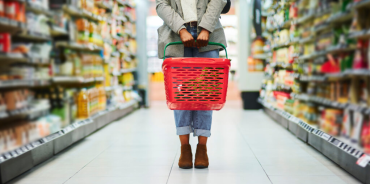The technologies powering retail transformation
The pandemic has had an impact on so many aspects of our daily lives. This has been no different for businesses, who were forced to adapt their ways of working and their evolving customer needs. Retailers have responded quickly throughout the last 18 months, whether adjusting to the latest government restrictions or rapidly expanding their ecommerce operations to cater for the boom in online shopping.
With many countries now seeing the beginnings of a return to normality, this pace of change and innovation shows no sign of slowing, and new retail business models are emerging quicker than ever before.
Many of these new technologies are blurring the lines between physical and digital; from ad tech and fintech to data and fulfilment, the retail industry is responding to new technologies, bringing with them a whole host of new challenges and opportunities.
The first-party data premium
Google will phase out third-party cookies on the Chrome browser by 2023, while other browsers, including Firefox and Safari, have already banned the use of third-party cookies due to concerns around privacy.
As a result, the third-party data that drove the last decade’s programmatic ad tech boom is already far less relevant. Instead, retailers with large first-party data sets and significant online presence will be those who benefit from the increased value of first-party data. This shift in how data is used will likely result in the growth of two ecommerce models:
- The marketplace model – most likely the default model for large retailers, enabling third-party sellers to list products, as demonstrated particularly successfully by Amazon.
- Direct to consumer – brands are recognising the value of first-party data and using online distribution to serve customers in new ways, allowing them to take greater ownership of the customer relationship.
Of these two models, the marketplace approach looks set to capture the majority of new media revenue. Based on reported ad revenue from Amazon.com, as much as 85% of this will be driven by the sponsored products format. Retailers not participating in the marketplace model will limit their ability to benefit fully from retail media and will most likely rely on higher margins.
The emergence of new data layers
The increased importance of first-party data also means companies will need a way to share this data within the business – across different sources and data lakes –in a privacy-centric way.
This has resulted in the growth of companies such as InfoSum and Habu, which act as data clean rooms allowing this privacy-centric approach. We’re already seeing walled gardens (technology providers retaining control of data and tech) making a comeback, and with privacy regulations evolving, this augmented data layer will play an important role in accurate media and marketing measurement.
The changing nature of data sharing
The growth of mobile payments and frictionless checkouts is set to put an end to the paper receipt, creating entirely digital purchase histories that exist over several inboxes and apps.
This shift toward digital receipts also offers consumers increased opportunity to monetise their own purchase data. Applications such as HuYu by dunnhumby Beyond – allowing consumers to monetise their data by submitting paper receipts – are now able to gain access to consumer data directly from shoppers’ inboxes and loyalty accounts. Not only is this data cleaner and easier to process, but it also allows consumers to passively share information more easily. Some large retailers have recognised the risk this poses to their monopoly on customer insights, choosing to leave off product details in email receipts.
As first-party data grows in importance, we can expect more retailers looking to protect their competitive advantage by making the sharing of purchasing data more inconvenient for consumers.
Delivery providers become retailers
Major food delivery businesses, such as DoorDash, GrubHub, UberEats and Deliveroo, are powering the next-hour commerce trend and rapidly expanding beyond prepared food to provide grocery and convenience offerings, which is a space that has so far been dominated by Instacart.
These businesses could also make use of the valuable consumer shopping data they have gathered to become retailers themselves. Gopuff, for instance, specialises in delivering everyday essentials and operates 400 microfulfilment centres.
Meanwhile, Instacart has announced plans to build automated fulfilment centres across the US, which may involve hundreds of thousands of gig workers being replaced by robots. It’s possible these delivery providers will find it easier to move into retail than many retailers will find it to move into next-hour delivery. Retailers operate at a profit, while start-up delivery providers often don’t – and are comfortable with that reality.
Retailers will need to consider how to respond should delivery businesses allow shoppers to pick items up from the warehouse – or even shop inside.
Given the speed of change, being aware of the latest developments and ready to seize new opportunities and adapt to new challenges is set to be more crucial than ever over the year ahead. At dunnhumby we explored these retail tech trends and more on the latest dunnhumby webinar, which you can view on demand here.
TOPICS
RELATED PRODUCTS
Make Retail Media work for your business with Customer Data Science
Retail Media solutionsHelping brands get the most from retail media
Audience Targeting solutionsThe latest insights from our experts around the world
Winning with private brands, the customer-first way
How to overcome assortment challenges? Lessons from history




